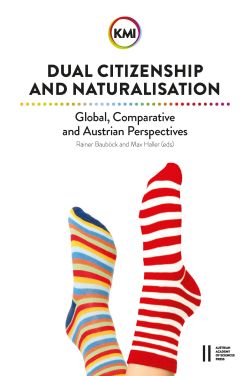
Dual Citizenship and Naturalisation. Global, Comparative and Austrian Perspectives, pp. 229-252, 2021/05/05
Global, Comparative and Austrian Perspectives

Naturalisation in Austria, as in most countries, is bound by certain conditions. Among others these entail an uninterrupted stay in the country for at least ten years (in special circumstances, only six years are required). Information from the Central Residence Register processed in the population statistics of Statistics Austria allows for an estimation of how many people currently living in Austria would fulfil this specific condition and therefore potentially qualify for naturalisation. The chapter presents the results of these estimations, disaggregated by citizenship, age and region of residence. EU/EFTA citizens in Austria have little propensity for naturalisation. Among non-EU/EFTA citizens, the propensity for naturalisation was higher and increasing over time. The naturalisation of all non-EU/EFTA citizens with ten years or more of residence in Austria would reduce the share of foreign citizens there from 16.7 to 13 per cent. This would roughly offset the increase in the foreign population in Austria in the last five years. The naturalisation of eligible EU/EFTA citizens would further reduce the foreigners’ share in the population to 10 per cent. If persons with a residence period of between six and ten years were also all naturalised, the percentage of foreigners would drop even further to 7.5 per cent, less than half the actual share recorded on 01 January 2020. At a regional level, Vienna has the highest potential for naturalisation, followed by Vorarlberg and Salzburg, if only non-EU/EFTA citizens residing there for ten years or more are counted.